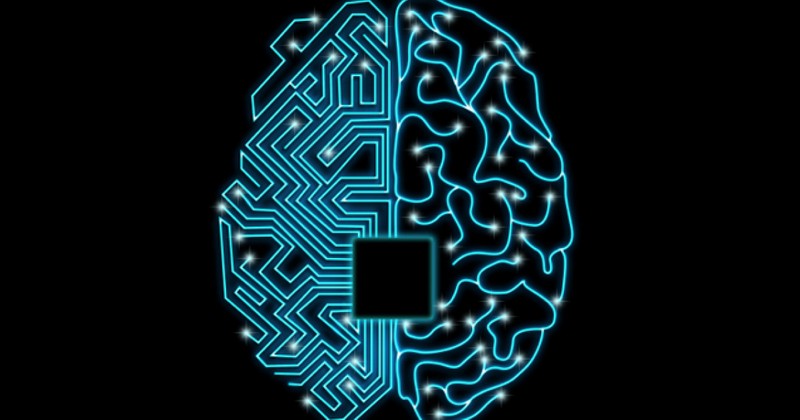Gerstmann’s syndrome: causes, symptoms and treatment.

A rare neurological disorder with four very specific symptoms.
At the beginning of the last century, Josef Gerstmann encountered a patient who, after a brain injury, was unable to name the fingers on his hand or even recognize them.or even recognize them. Moved by the interest of this curious symptom, he found a constellation of symptoms accompanying this phenomenon.
Let us now consider the Gerstmann's syndromea clinical picture that occurs after a lesion of the parietal lobes. We will describe what are its symptoms, in what place the lesion is located and for what causes it can occur.
Symptoms of Gerstmann's syndrome.
When we talk about the original Gerstmann's patient, we always mention the four classic symptoms: digital agnosia, agraphia, acalculia and laterality problems.
If these four cardinal points are present at the same time in a patient, we say that he/she suffers from Gerstmann's syndrome.
1. Digital agnosia
This is a form of asomatognosia, i.e., inability to recognize parts of one's own body.. This symptom can affect either side of the body depending on which cerebral hemisphere is affected. Interestingly, the inability to recognize fingers is closely related to the presence of dyscalculia. Those children who, due to an injury or malformation, are unable to recognize their own fingers, have much more difficulty learning to calculate.
2. Agraphia
The patient with Gerstmann syndrome is unable to communicate in writing.. Agraphia can occur for two different reasons: either because of an injury that causes linguistic deficits or because of an injury where the linguistic ability is fine, but motor skills are affected.
In the case of Gerstmann syndrome it is not clear what the reason for this is. Although some patients also present other language disorders such as inability to read or aphasias that could be related, we also know that a common denominator in the syndrome is the inability to manipulate images mentally. Both hypotheses remain open.
3. Dyscalculia
This is the name given to the difficulties in performing arithmetic operations in one's head.. Patients with Gerstmann's syndrome have difficulties with even the simplest additions and subtractions. It remains to be elucidated exactly at what point in the arithmetic operations the disability occurs. Perhaps it is in the retention of numbers in consciousness, as a kind of working memory for arithmetic operations.
4. Laterality problems
Gerstmann's patient was completely unable to differentiate left from right.. This is not crossed laterality, where both directions are confused, but the loss of the notion of laterality. For this person left and right do not exist and responds randomly to the tests that are made in this regard.
To this classic tetralogy are added other symptoms that may or may not be present depending on the patient. The lesions in each case are unique and will result in a different clinical picture, although all (or almost all) will present these four key points. Many of the patients show a fifth symptom not included in the tetralogy, but which over the century has become more and more relevant in case descriptions.
5. Aphasia
The inability to articulate language can be observed in many patients with Gerstmann's syndrome, indicating that more than an affliction of the brain, the Gerstmann's syndrome is not a symptom of a disease.The inability to articulate language can be observed in many patients with Gerstmann's syndrome, indicating that rather than an impairment of concrete abilities, it may actually be symbolic thinking that is affected. Moreover, it could even be that the inability to understand abstract concepts explains why patients do not know what to answer when asked where the right or index finger is, confusing digital agnosia with receptive aphasia.
Causes of this syndrome
The syndrome is caused by a lesion in the left parietal region of the brain, specifically the angular gyrus.. The parietal region is in charge of motor and sensibility, spatial, calculation and part of language. It is normal, then, that a lesion somewhere in the parietal lobe, due to geographical and functional proximity, affects all this group.
It is common for regions close to each other to perform similar functions or to complement each other, as if each had specialized in a specific aspect of a more general function. For example, motor skills and sensitivity are intimately related and one is next to the other. Thus, a lesion in motor skills can also alter sensitivity and vice versa. This is why an apparently focal lesion can affect a whole subsystem of interrelated components.
The reasons why someone might suffer damage to the parietal lobe are manifold.. Cranioencephalic trauma, through the blow itself or the edema that is generated afterwards, brain tumors or even cerebrovascular accidents are common causes of this syndrome. It is very common to find people who have lost the Blood supply to this area of the brain, losing the neurons responsible for these functions.
Treatment
The treatment of Gerstmann's syndrome is symptomatic. There is nothing that can be done to automatically restore the damage, but this does not mean that the individual cannot rehabilitate himself and relearn all those skills he has lost. and relearn all those skills that have been lost. Depending on the injury, the severity of the injury and the age of the individual, the prognosis is different.
To get an idea, we must think that the brain is very plastic and has the capacity to reorganize itself to take over the functions that have been lost. It is as if the workers of a company were to assume the responsibilities of an entire department that has just been laid off, but at no cost. The younger the brain, the greater the capacity to adapt.
With progressive training it is possible to restore functions. A return to pre-syndrome functioning may not always be possible, especially if the affected area is very large or the lesions are deep, but disability is ruled out if cognitive rehabilitation is followed thoroughly.
(Updated at Apr 12 / 2024)